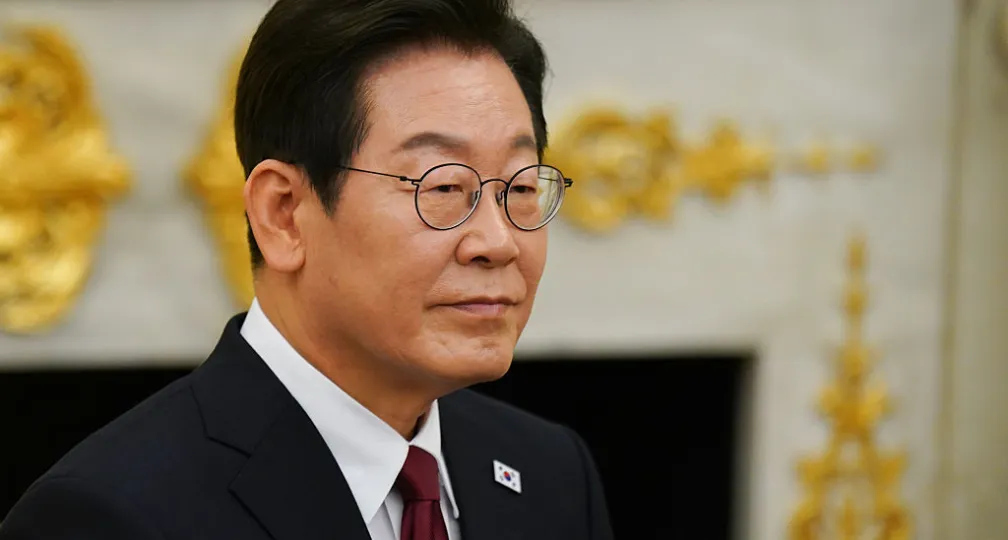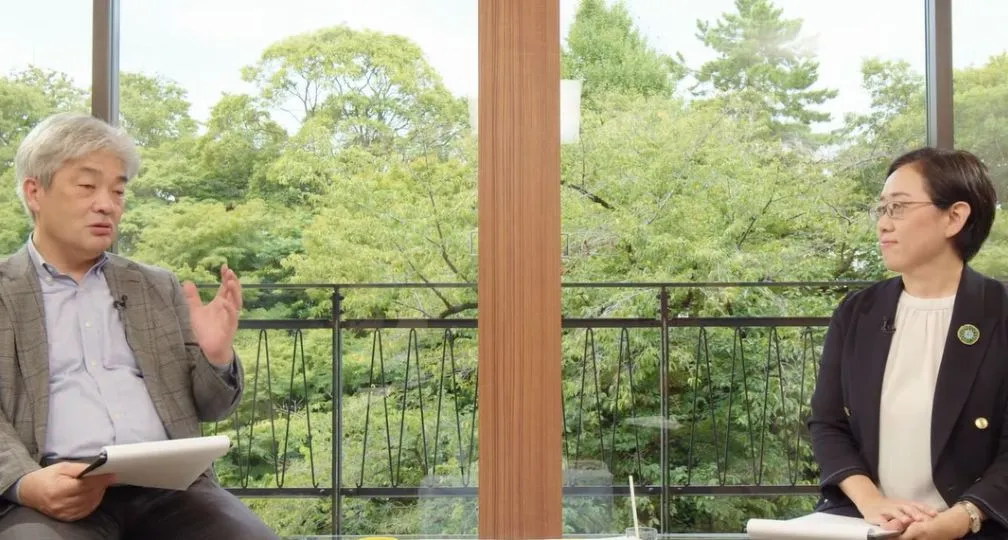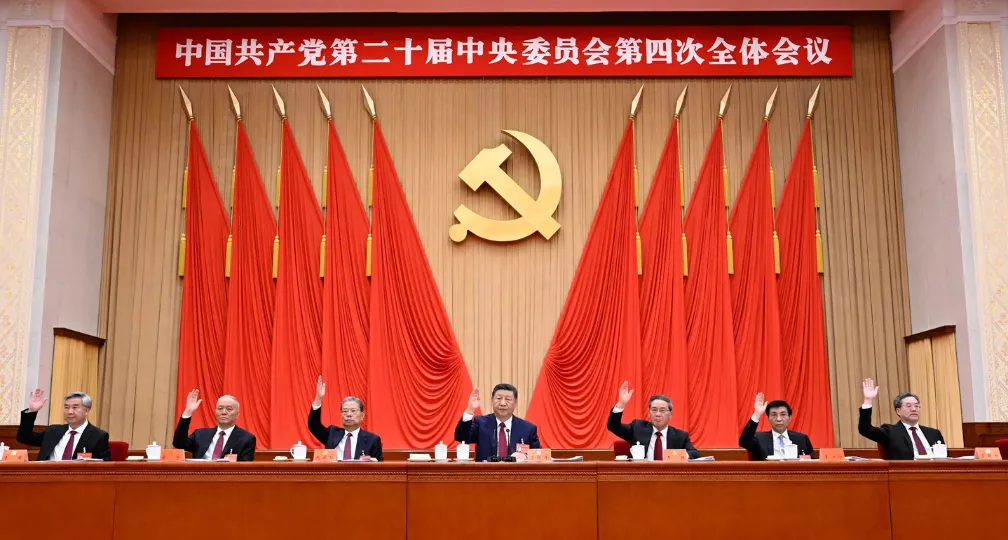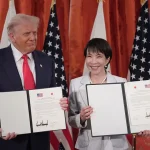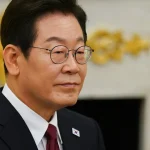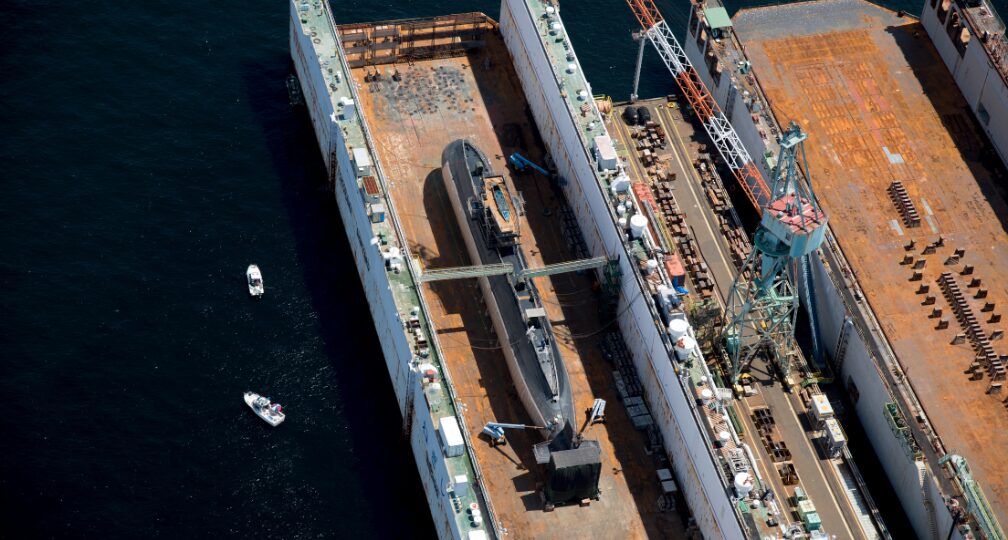In dealing with Beijing, Tokyo must adopt a strong security front
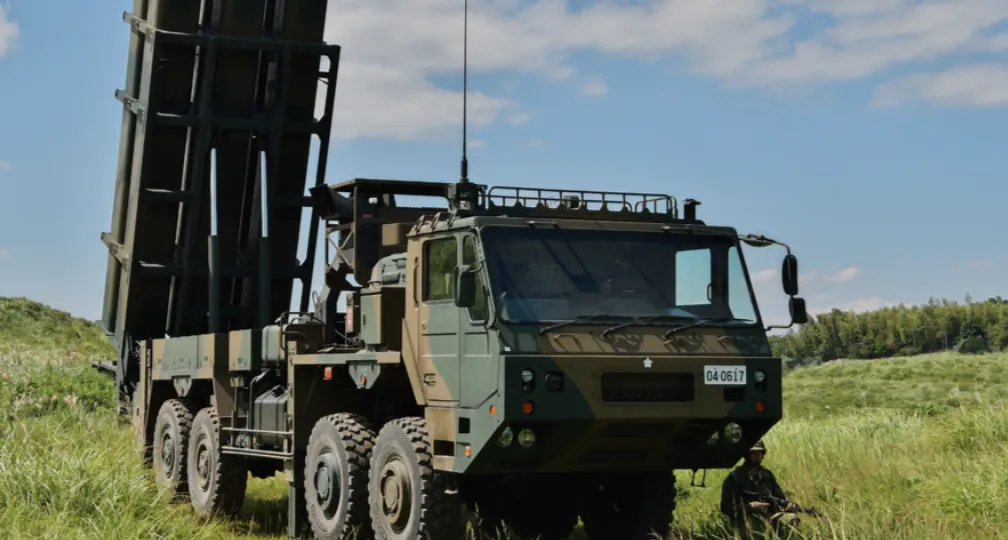
However, while there have been lots of plans announced on introducing new defense equipment such as long-range missiles, it appears there have been few discussions on the strategy itself — how Japan should fight using the increased defense spending and new defense equipment.
The government might be avoiding making the discussions public, taking into account diplomatic considerations and the sensitivity of the issue related to national security, but if a strategy becomes tacit knowledge without being put into words, people of different positions will interpret it differently and its true nature will become ambiguous.
Instead, discussions on a defense strategy must dictate the direction of strengthening defense capabilities.
This article will discuss what kind of defense strategy Japan should aim for in order to prevent pitfalls created by tacit knowledge.
Long-standing tradition
Japan putting focus on discourse surrounding defense capabilities rather than strategies is nothing new.
All the core concepts introduced in past NDPGs — “basic defense capability” described in the 1976 guidelines; a “multifunctional, flexible, effective defense force” stipulated in the 2004 guidelines; a “dynamic defense force” prescribed in the 2010 guidelines; a “dynamic joint defense force” set forth in the 2013 guidelines; and “multi-domain defense force” stated in the 2018 guidelines — indicate the fact that the guidelines have served to show the direction for “defense capabilities,” but not to clarify defense strategy.
This is partly because the guidelines were first put together in 1976 to set a limit on defense capabilities amid the Detente situation during the Cold War.
And there was little room for Japan to build up defense capabilities under its own strategy during the Cold War, a period of U.S.-Soviet dichotomy when the main assumed battlefield was not the Far East but Europe.
Even after the end of the Cold War, it was difficult for a major shift to occur in this way of thinking during decades of decreased threat awareness and uncertainty.
Compiled for the first time in 2013, the NSS set a broad outline of where the nation’s security strategy should head, but it kept silent on crystallizing a defense strategy, as specific descriptions on defense architecture were left to be dealt with in the NDPG and the MTDP.
Dual dilemmas
This underlying premise has been changed by China’s military expansion and its challenges to the existing international order.
The U.S.’ new National Security Strategy issued in October calls China “the only competitor,” and the Department of Defense’s National Defense Strategy describes the country as “the most comprehensive and serious challenge to U.S. national security.”
Regardless of the way it is described, China undoubtedly poses the biggest military challenge not only for the United States, but also for Japan.
Beijing has been pressuring Taiwan with harsh speech and military activities, raising concerns over a possible Taiwan contingency.
If China is to attempt to unify with Taiwan through nonpeaceful means, there could be the possibility of Beijing combining both military and nonmilitary measures, ranging from cognitive warfare, directed at the Taiwanese people, to a large-scale military invasion. This means China might not necessarily engage in a full-scale incursion from the beginning of its overall attempt to coercively change the status quo.
Meanwhile, if Beijing wants to start invading Taiwan militarily at a certain stage and make it successful, it is likely that the attacks will be made not only from the Taiwan Strait but also from sea and air domains in all other directions, including the Western Pacific located east of Taiwan.
Such actions from the Pacific could lead to military interventions by the U.S. and Japan, which means China, in invading Taiwan from its east side, would become vulnerable to attacks from behind.
In order for China to avoid becoming vulnerable, it would be faced with the choice of decoupling Japan and the U.S. from Taiwan or preparing to fight a battle with them in the Western Pacific from the initial stage of invasion.
It would be easier militarily to deal only with Taiwan, putting aside Japan and the U.S., but China will have to bear higher military costs if it doesn’t prepare for interventions by Tokyo and Washington and is attacked from behind, compared with the scenario in which Beijing gets the two countries involved from the beginning.
To prevent such a risk, China would also have to prepare for the possibility of carrying out pre-emptive strikes on Japan and the U.S.
China’s dilemma of preparing for interventions by Japan and the U.S. while invading Taiwan means Japan also needs to prepare for worst-case scenario — having to defend its own territories, including the Nansei Islands and the Senkaku Islands from Chinese attacks.
Moreover, until now China’s buildup of capabilities such as missiles has boosted its anti-access/area denial (A2/AD) capabilities, thus raising the costs of intervention for the U.S.
However, as Beijing strengthens its landing capabilities necessary for an invasion of Taiwan, it will be also forced to cope with the A2/AD capabilities of Japan and the U.S. directed against China.
If China not only refuses to deal with U.S. military intervention but also projects its forces effectively through surrounding Taiwan, it would lead to another vulnerability, creating a dilemma between power projection and this vulnerability.
Japan’s required defense strategy
Japan must aim for a defense strategy that effectively deals with these dual dilemmas faced by China.
That is, Tokyo’s strategy should be something that makes Beijing recognize it would suffer huge losses if Japan got involved in a Taiwan contingency and to show that Japan’s capabilities cannot be incapacitated by pre-emptive action from China. In other words, it should be something that makes China hesitate to invade Taiwan or attack Japan.
Needless to say, this cannot be done only with defense capabilities, and Japan should work on this while conducting diplomacy and coping with cognitive warfare so that the international community, including Japan, will not fail to act against China’s attempt to unilaterally change the status quo in Taiwan by force.
But at the same time, it is not possible to deter today’s China only through diplomatic efforts without the backing of robust defense capabilities.
To achieve these goals, Japan should strive to create a defense strategy that I call “denial in-depth strategy,” which aims to deny enemies’ course of operations in depth, meaning targeting their key forces and vulnerabilities including offshore reinforcements and ground C4ISR (command, control, communications, computers, intelligence, surveillance and reconnaissance) capabilities rather than concentrating and balancing forces on the front line to counter attacks as they come.
Interoperability with the U.S. is indispensable in realizing such a strategy in any operational phases.
The 2018 NDPG states that in response to an attack on Japan, including its remote islands, the Self-Defense Forces will quickly maneuver and deploy requisite units to block access and landing of invading forces while ensuring maritime and air superiority.
According to the guidelines, even when maintaining maritime and air superiority becomes untenable, the SDF will block invading forces’ access and landing from outside their threat envelopes. Should any part of the territory be occupied, the SDF will retake it by employing all necessary measures.
However, such a strategy of choosing between a stark division of ensuring maritime and air superiority and territorial defense if it loses the superiority is no longer the most appropriate plan at a time when China has become an overwhelming military power and when missiles and unmanned vehicles play an increasingly important role in wars.
Russia’s war in Ukraine offers a glimpse of such evidence.
Although Russia initially had overwhelming air and missile capabilities, it failed to neutralize Ukraine’s air defense capabilities and has not been able to establish air superiority so far.
Maximilian K. Bremer and Kelly A. Grieco wrote in a commentary for War on the Rocks that the reason behind this is Ukraine’s air denial, which is effectively utilizing numerous unmanned vehicles and short-range surface-to-air missiles to prevent Russia from achieving air superiority.
If this observation is correct, there is a possibility that future warfare will shift its focus from obtaining overwhelming sea and air superiority using large-scale forces such as fighter jets and aircraft carriers, to a denial strategy of preventing adversaries’ operations asymmetrically with smaller, dispersed and survivable forces.
Meanwhile, unlike with Ukraine, there is an ocean lying between Japan and China.
Ukraine and Russia, which share land borders, are both suffering increasing damage from extended ground battles as each fails to gain air supremacy over the other. But Japan can make use of its geographical advantage and deny China’s capabilities in depth not only on land but also at sea and in the air.
It is true that unlike ground battles that make use of complex topography, it is difficult to fight an asymmetric war in transparent, flat sea and air domains in which it is easier for radars and sensors to detect objects.
Still, there is the undersea domain where radar detection can be avoided, whereas the weakness of being detected in the air domain can be compensated for by making use of many small, unmanned assets. Long-range missiles launched from the ground can also complement such capabilities.
Setting priorities
Japan has built its defense capabilities with the aim of gaining sea and air superiority, and, when that is lost, counter adversaries on land including on remote islands.
If it is to adopt the denial in-depth strategy, it will have to change its policy greatly.
In particular, the Ground Self-Defense Force’s 15 divisions and brigades, which are designed to fight conventional ground battles, would not be the first and foremost forces to go to war under the current strategic environment, and it is likely that most of them may not be employed until the final stages.
If that is the case, some of the 15 divisions and brigades need to be fundamentally reorganized for denial of in-depth operations into “missile brigades” and “unmanned vehicle brigades,” having a number of small, dispersed units.
Moreover, the Maritime and Air Self-Defense Forces should recognize that manned fighter jets and destroyers have limitations in the current setting, and they should largely increase unmanned assets that can be used at sea, underwater and in the air.
The government announced the introduction of long-range missiles, unmanned vehicles and intelligence, surveillance and reconnaissance capabilities, all of which are indispensable to realize this strategy.
From the viewpoint of a denial in-depth strategy, however, there is a concern that there seems to be no substantial discussion on the immediate introduction of longer-range surface-to-air missiles and attack unmanned undersea vehicles (UUVs).
The fact that the Defense Ministry is making a budgetary request for UUVs only as something subject to underlying technology research is especially concerning.
A clear defense strategy requires the prioritizing of specific areas of defense buildup.
While there is a risk of the three arms of the Self-Defense Forces moving to protect each of their vested interests, it is necessary to hold healthy discussions by making clear not only the defense buildup plans but also the defense strategy underlining them.
In order to do so, the newly promulgated National Defense Strategy, which replaced the existing NDPG, is expected to guide and integrate specific defense buildup plans with a clear defense strategy that Japan must aim for.
(Photo Credit: Aflo)

Geoeconomic Briefing
Geoeconomic Briefing is a series featuring researchers at the IOG focused on Japan’s challenges in that field. It also provides analyses of the state of the world and trade risks, as well as technological and industrial structures (Editor-in-chief: Dr. Kazuto Suzuki, Director, Institute of Geoeconomics (IOG); Professor, The University of Tokyo).
Disclaimer: The opinions expressed in Geoeconomic Briefing do not necessarily reflect those of the International House of Japan, Asia Pacific Initiative (API), the Institute of Geoeconomics (IOG) or any other organizations to which the author belongs.


Senior Research Fellow
Hirohito Ogi is a senior research fellow at the Institute of Geoeconomics (IOG) studying military strategy and Japan’s defense policy. Before joining the IOG, Mr. Ogi had been a career government official at the Ministry of Defense (MOD) and Ministry of Foreign Affairs (MOFA) for 16 years. From 2021 to 2022, he served as the Principal Deputy Director for the Strategic Intelligence Analysis Office, the Defense Intelligence Division at the MOD, where he led the MOD’s defense intelligence. From 2019 to 2021, he served as a Deputy Director of the Defense Planning and Programming Division at the MOD. He holds a Master’s degree in international affairs from the School of International and Public Affairs (SIPA), Columbia University, and a Bachelor’s degree in arts and sciences from the University of Tokyo. He is the author of various publications including Comparative Study of Defense Industries: Autonomy, Priority, and Sustainability (co-authored, Institute of Geoeconomics, 2023).
View Profile-
 Trump’s Tariffs Might Be Here to Stay – No Matter Who’s in Power2025.11.28
Trump’s Tariffs Might Be Here to Stay – No Matter Who’s in Power2025.11.28 -
 The long road to a South Korea-U.S. trade deal2025.11.26
The long road to a South Korea-U.S. trade deal2025.11.26 -
 Event Report: The Trump Tariffs and Their Impact on the Japanese Economy2025.11.25
Event Report: The Trump Tariffs and Their Impact on the Japanese Economy2025.11.25 -
 Xi’s Balancing Act: Competition Abroad, Discipline at Home2025.11.17
Xi’s Balancing Act: Competition Abroad, Discipline at Home2025.11.17 -
 India’s Structural Reforms: Opportunities and Risks2025.11.14
India’s Structural Reforms: Opportunities and Risks2025.11.14
 Event Report: The Trump Tariffs and Their Impact on the Japanese Economy2025.11.25
Event Report: The Trump Tariffs and Their Impact on the Japanese Economy2025.11.25 Can Takaichi Build on a Successful Summit?2025.10.31
Can Takaichi Build on a Successful Summit?2025.10.31 The Real Significance of Trump’s Asia Trip2025.11.14
The Real Significance of Trump’s Asia Trip2025.11.14 The long road to a South Korea-U.S. trade deal2025.11.26
The long road to a South Korea-U.S. trade deal2025.11.26 India’s Structural Reforms: Opportunities and Risks2025.11.14
India’s Structural Reforms: Opportunities and Risks2025.11.14



